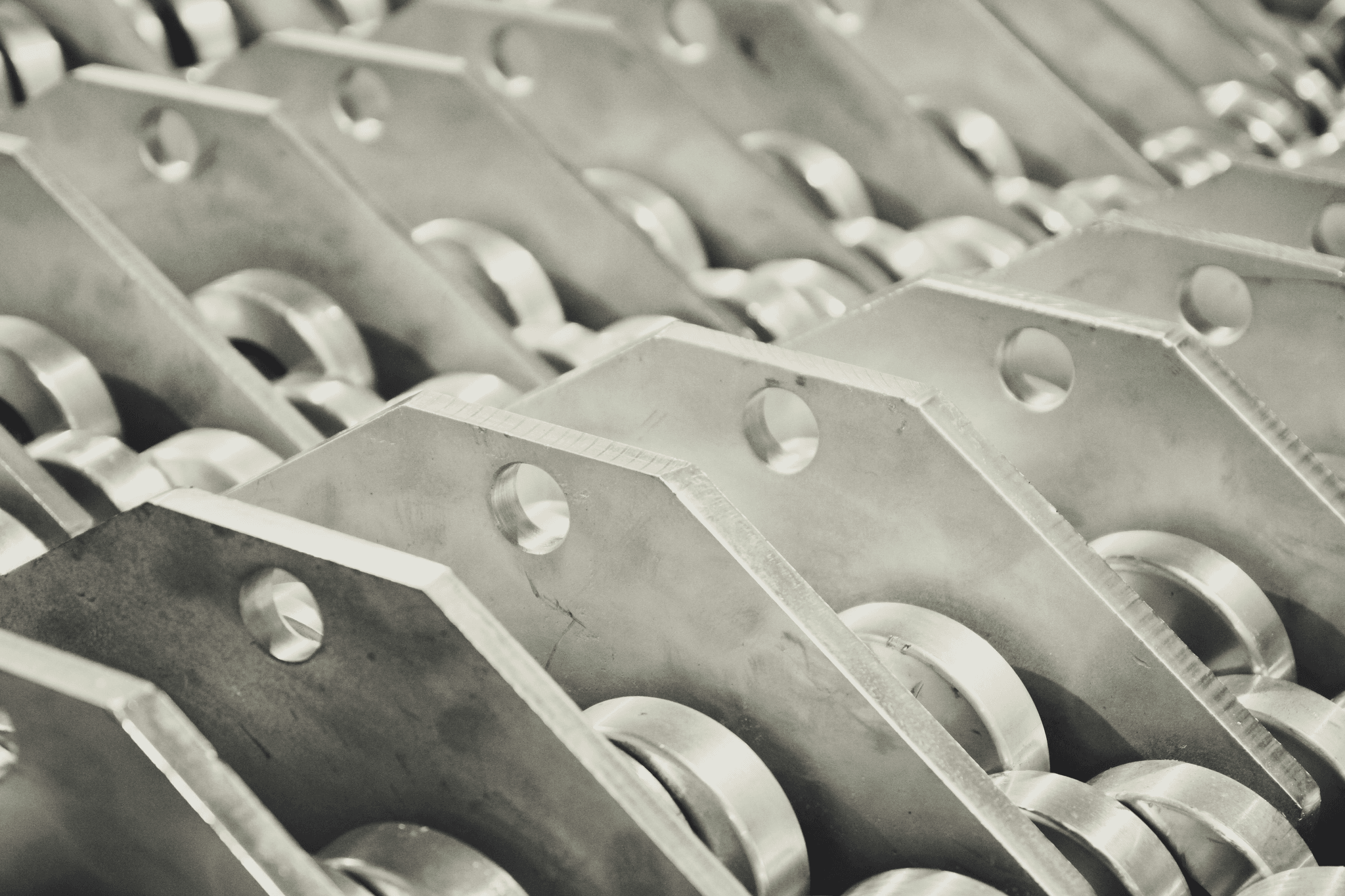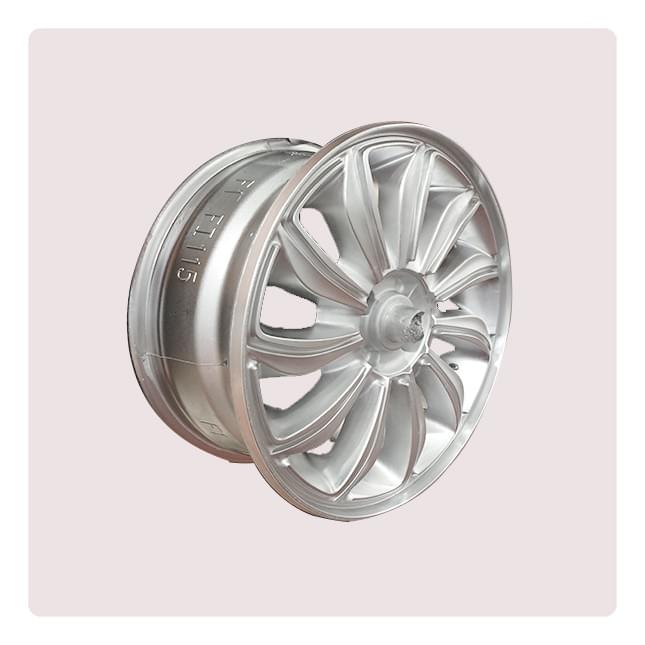Introduction

Aluminum die casting is a versatile manufacturing process that has revolutionized the production of complex metal parts. It involves injecting molten aluminum into a steel mold under high pressure, resulting in precise, high-quality components. Die casting aluminum offers numerous advantages, making it a popular choice across various industries. Understanding the process and applications of die-cast aluminum is crucial for manufacturers and engineers looking to optimize their production processes.
Understanding Aluminum Die Casting
Aluminum die casting is a metal casting process that utilizes high-pressure injection to produce intricate shapes with thin walls and fine details. This method allows for the creation of complex geometries and tight tolerances, making it ideal for a wide range of industrial applications.
The Process of Aluminum Die Casting
The process of aluminum die casting involves melting the aluminum alloy at high temperatures before injecting it into a steel mold under extreme pressure. This results in fast production cycles and consistent part quality, making it an efficient and cost-effective manufacturing method.
Exploring Die Casting Aluminum
Die-cast aluminum offers exceptional strength-to-weight ratio, corrosion resistance, and thermal conductivity, making it suitable for automotive, aerospace, electronics, and consumer goods industries. Its versatility and durability make it an attractive choice for manufacturers seeking reliable and high-performance components.
What is Aluminum Die Casting?

Aluminum die casting is a metal casting process that involves forcing molten aluminum into a mold cavity under high pressure. This results in a precise and smooth surface finish, making it ideal for intricate and complex designs. The process of aluminum die casting begins with melting the aluminum, injecting it into the die, and then allowing it to cool and solidify before ejecting the part.
The basics of aluminum die casting
The basics of aluminum die casting involve using high-pressure injection to fill a mold cavity with molten aluminum. This results in parts that are strong, durable, and dimensionally stable. Aluminum die casting is known for its excellent thermal conductivity and electrical conductivity, making it suitable for a wide range of applications across various industries.
In addition to its excellent thermal and electrical conductivity, aluminum die casting offers the advantage of being highly recyclable. This makes it an environmentally friendly option for manufacturers looking to reduce their carbon footprint and promote sustainability. Furthermore, aluminum die casting allows for complex shapes and thin walls, providing design flexibility and the ability to create intricate parts with precision. This versatility makes it a preferred choice for industries such as automotive, aerospace, and electronics.
Advantages of using aluminum die casting
One of the key advantages of using aluminum die casting is its lightweight yet durable nature. It also offers excellent corrosion resistance, high dimensional stability, and the ability to withstand high operating temperatures. Additionally, aluminum die casting allows for tight tolerances and intricate shapes to be achieved with minimal machining.
Furthermore, aluminum die casting is a cost-effective manufacturing process, as it allows for high production rates and the ability to create complex shapes with minimal material waste. This makes it an ideal choice for mass production of components in industries such as automotive, aerospace, and electronics. The lightweight nature of aluminum also contributes to fuel efficiency in automotive applications, making it a preferred choice for manufacturers looking to meet stringent environmental regulations while maintaining performance.
Applications of aluminum die casting
Aluminum die casting finds applications in numerous industries such as automotive, aerospace, electronics, and consumer goods. Its versatility makes it suitable for producing components like engine blocks, transmission housings, heat sinks, and various other structural components.
Aluminum die casting is also widely used in the production of consumer electronics, such as smartphones, laptops, and tablets. The lightweight yet durable nature of aluminum makes it an ideal material for these devices, providing the necessary strength while keeping the overall weight to a minimum. Additionally, the excellent thermal conductivity of aluminum helps in dissipating heat generated by electronic components, ensuring optimal performance and longevity of electronic devices.
How Aluminum Die Casting Works

Aluminum die casting is a process that involves injecting molten aluminum into a steel mold under high pressure. This allows for the creation of complex shapes with a high level of accuracy and detail. The process begins with the melting of the aluminum, which is then injected into the mold cavity at high speed. Once the aluminum has solidified, the mold is opened, and the newly formed part is removed.
The die-cast aluminum process
The die-cast aluminum process involves using a steel mold to create parts from molten aluminum. The molten metal is forced into the mold under high pressure, allowing for intricate and detailed parts to be produced with excellent dimensional accuracy. This process is highly efficient and cost-effective, making it ideal for mass production of parts used in various industries.
Similarities and differences between aluminum and die-cast aluminum
The main difference between aluminum and die-cast aluminum lies in their manufacturing processes. While regular aluminum can be shaped through various methods such as extrusion or machining, die-cast aluminum involves injecting molten metal into a mold under pressure to achieve complex shapes with precision. Both materials share similar properties such as lightweight, corrosion resistance, and recyclability.
The role of Ningbo Buttler Precision Machinery Co., Ltd. in aluminum die casting
Ningbo Buttler Precision Machinery Co., Ltd. specializes in providing innovative tooling designs engineered for cost-effective manufacturing to maximize performance and casting quality while minimizing the need for secondary operations! They are experts in die-casting molds, processing, surface treatment, assembly, packaging, as well as providing expertise in both aluminum and zinc castings.
Smart Part Engineering in Aluminum Die Casting

Ningbo Buttler Precision Machinery Co., Ltd. specializes in die-casting molds, aluminum and zinc castings, processing, surface treatment, assembly, and packaging. Their expertise in smart part engineering ensures better part designs that maximize performance and casting quality. Through innovative tooling designs engineered for cost-effective manufacturing, they minimize the need for secondary operations.
Maximizing performance and casting quality
By leveraging smart part engineering, companies can optimize their new and existing parts to achieve superior performance and casting quality. This approach allows for the production of high-quality aluminum die castings that meet stringent industry standards while minimizing defects and ensuring consistency.
Innovative tooling designs for cost-effective manufacturing
Buttler's innovative tooling designs are tailored to facilitate cost-effective manufacturing processes without compromising on the quality or integrity of the final product. These designs are aimed at streamlining production while maintaining precision and efficiency throughout the die casting process.
Buttler's expertise in die-casting molds and aluminum and zinc castings
As a leader in the industry, Ningbo Buttler Precision Machinery Co., Ltd.'s expertise in die-casting molds, aluminum, and zinc castings is unparalleled. Their comprehensive knowledge allows them to provide end-to-end solutions that encompass processing, surface treatment, assembly, packaging, and everything in between.
Die-cast Aluminum vs. Cast Aluminum

When understanding the differences between die-cast and cast aluminum, it's important to note that die-cast aluminum is produced by injecting molten aluminum into a steel mold under high pressure, resulting in complex shapes with thin walls and fine details. On the other hand, cast aluminum involves pouring molten aluminum into a mold and allowing it to solidify, producing simpler shapes with thicker walls. The die-casting process allows for more intricate designs and tighter tolerances compared to traditional casting methods.
Understanding the differences between die-cast and cast aluminum
One key difference between die-cast and cast aluminum lies in their mechanical properties. Die-cast aluminum parts tend to have higher strength and stiffness compared to cast aluminum due to their finer microstructure, which results from the rapid cooling during the die-casting process. Additionally, die-cast aluminum parts often exhibit superior dimensional accuracy and surface finish, making them ideal for applications where precision is crucial.
Applications of die-cast aluminum vs. cast aluminum
Die-cast aluminum is commonly used in industries such as automotive, aerospace, electronics, and consumer goods due to its ability to produce complex components with excellent mechanical properties. On the other hand, cast aluminum finds applications in simpler components where cost-effectiveness is prioritized over intricate designs and tight tolerances.
Surface treatment, assembly, and packaging in die-cast aluminum production
In the production of die-cast aluminum parts, surface treatment processes such as painting, powder coating, or anodizing are often employed to enhance corrosion resistance and improve aesthetics. Furthermore, assembly of multiple die-cast components may be required for creating finished products before they are carefully packaged for shipping or distribution.
What is the Process of Aluminum Die Making?

Exploring the process of aluminum die making
The process of aluminum die making involves creating a mold or tooling that will be used to produce the desired aluminum parts through the die casting process. This includes designing and machining the mold to precise specifications, ensuring that it can withstand high temperatures and pressures during production.
Ningbo Buttler Precision Machinery Co., Ltd.'s specialization in aluminum and zinc casting
Ningbo Buttler Precision Machinery Co., Ltd. specializes in providing high-quality die-casting molds for aluminum and zinc castings. Their expertise lies in creating durable and precise molds that are essential for producing consistent and accurate parts through the die casting process. Quality control is paramount in aluminum die making, as even the smallest imperfection in the mold can result in defective parts. Ningbo Buttler Precision Machinery Co., Ltd. understands this critical aspect and ensures that every mold meets strict quality standards before it is used in production.
Importance of quality control in aluminum die making
Quality control is crucial in the process of aluminum die making to ensure that the molds meet the required specifications for producing high-quality parts. Ningbo Buttler Precision Machinery Co., Ltd. employs rigorous quality control measures to guarantee that their molds are capable of delivering superior performance and durability.
In addition to ensuring the molds meet specifications, quality control in aluminum die making also involves inspecting the raw materials used in the process. Ningbo Buttler Precision Machinery Co., Ltd. carefully selects and tests the aluminum alloys to guarantee they are of high quality and suitable for die casting. This attention to detail at every stage of production results in molds that are not only precise but also resistant to wear and tear, ultimately leading to longer-lasting and more reliable parts.
Conclusion

The future of aluminum die casting looks bright, with advancements in die-cast aluminum technology paving the way for more efficient and cost-effective manufacturing processes. As industries continue to explore the versatility of die-cast aluminum, we can expect to see its widespread application across various sectors.
The Future of Aluminum Die Casting
With ongoing technological advancements, the future of aluminum die casting appears promising. As new innovations emerge, we can anticipate even greater precision, efficiency, and sustainability in the die-casting process.
Advancements in die-cast aluminum technology
The continuous evolution of die-cast aluminum technology has led to significant improvements in part designs and manufacturing processes. These advancements have enabled manufacturers to produce high-quality components with enhanced performance and durability.
The versatility of die-cast aluminum in various industries
Die-cast aluminum's versatility makes it an ideal choice for a wide range of industries, including automotive, aerospace, electronics, and more. Its lightweight yet durable properties make it well-suited for diverse applications, from intricate components to structural parts.
By embracing these advancements and leveraging the expertise of companies like Ningbo Buttler Precision Machinery Co., Ltd., industries can unlock new possibilities for innovation and efficiency in their manufacturing processes. With a focus on smart part engineering and quality control in aluminum die making, the future holds great promise for the continued growth and success of die-cast aluminum technology.

